כללי
תחבורה
אנשים
אירוח
אוכל ושתייה
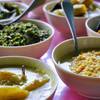 מהם אוכל המקומי בסרי לנקה?
מהם אוכל המקומי בסרי לנקה?
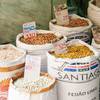 How much does the food cost?
How much does the food cost?
 Is there a special etiquette?
Is there a special etiquette?
 What are some places to eat?
What are some places to eat?
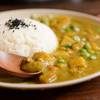 What local dishes to try in Sri Lanka?
What local dishes to try in Sri Lanka?
 Can I drink tap water in Sri Lanka?
Can I drink tap water in Sri Lanka?
 אילו משקאות קרים זמינים?
אילו משקאות קרים זמינים?
 האם יש תרבות של שתיית תה וקפה בסרי לנקה?
האם יש תרבות של שתיית תה וקפה בסרי לנקה?
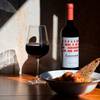 איפה ניתן לקנות אלכוהול בסרי לנקה ובכמה עולה?
איפה ניתן לקנות אלכוהול בסרי לנקה ובכמה עולה?
 מהם ההגבלות הקשורות לצריכת אלכוהול?
מהם ההגבלות הקשורות לצריכת אלכוהול?
 אילו משקאות אלכוהוליים לנסות במהלך השהות בסרי לנקה?
אילו משקאות אלכוהוליים לנסות במהלך השהות בסרי לנקה?
 Are there any grocery stores with Western food?
Are there any grocery stores with Western food?
ביקור באתרים
משפטי
כסף
בטיחות ובריאות
נסיעות משפחתיות
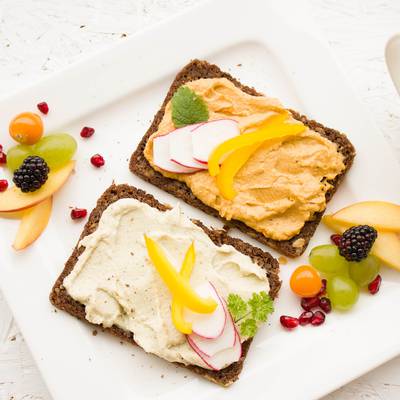
What can I eat in Sri Lanka as a vegetarian?
While much of the local food is seafood based (one of the perks of being an island), Sri Lanka is also one of the most vegetarian-and vegan-friendly countries in the world. Their food is a celebration of fresh fruit and vegetables like pandan, okra, beans, aubergine, cashews, beetroot and even potato. There are some vegetarian dishes and vegan dishes as well as vegetarian and vegan options of popular meat and seafood dishes.
Rice and curry. Vegetarian curries in Sri Lanka can be made from potato, pumpkin, mushroom, banana, young mango, jackfruit or egg. Most curries are cooked in coconut milk and are relatively mild. Sri Lankan curries are usually yellow in colour and cooked with lots of curry leaves. Sri Lankan curries are mostly vegan-friendly, but check that your curry doesn’t contain ghee (purified butter).
Dhal. Dhal is a spicy lentil dish that is served with rice, curries, roti bread or string hoppers. Dhal is made from red lentils and green chillies, as well as a blend of other spices. It’s a staple at most Sri Lankan meals and can be served at any time of day.
Roti. In Sri Lanka, “roti” refers to flat bread made of flour, water and salt. Sri Lankans eat with their hands and use their roti to scoop up curry or dhal. Roti breads vary by region and along the coastal areas in the south it’s common for roti breads to be stuffed with delicious fillings. These can be sweet and savoury. Common fillings include vegetables, egg, cheese, banana and nutella. You can even find a roti bread stuffed with avocado! Coconut rotis are common too but are smaller, more dense round breads as grated coconut is added to the flour mix.
Kottu. Kottu or kottu roti is a Sri Lankan speciality. Kottu is cut up roti bread fried with diced vegetables or chopped meat or fish. The sound of cutting up the roti bread is a loud and unmistakable beat of a large metal knife which you sometimes hear coming from restaurants.
String Hoppers. “String hoppers” are a Sri Lankan take on rice noodles. String hoppers are steamed nests of rice noodles. Sri Lankans make hoppers from scratch using a fermented rice flour batter. The dough is pressed through a hand press to make the stringy noodle nests. Sri Lanken hoppers can either be served for dinner or breakfast. Savoury string hoppers are served with dhal, while sweet ones are served with palm treacle.
Hoppers. Hoppers are made from the same mixture as string hoppers but look and taste quite different. This breakfast or snack food is a crispy pancake. The pancake is made from fermented butter, which is usually made of rice flour and coconut milk. Hoppers are often cooked in a small pan like a wok which gives the hopper distinctive crunchy edges and a softer middle. Many Sri Lankans eat hoppers with curry. Hoppers can also be served with an egg.
Pol Pani. These irresistible coconut pancakes are made from flour and coconut milk, then stuffed with palm treacle. Gorgeous either as a breakfast or a dessert. They don’t get listed on restaurant menus very often but you can find them served frequently at homestays.
Weli Thalapa. A Sri Lankan household sweet which is similar to a flapjack. These are served in homestays at tea time. Weli Thalapa are made from rice flour, scraped coconut, coconut treacle and spices. They’re usually suitable for vegans and gluten-free travellers, but check with the cook as ingredients might vary from household to household.

איך אני יכול לשכור רכב בסרי לנקה?
... כמה חברות יאפשרו לך לשכור את הרכבים שלהן אם יש לך רישיון נהיגה בינלאומי, עם …
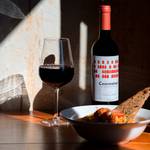
איפה ניתן לקנות אלכוהול בסרי לנקה ובכמה עולה?
... אתה יכול לקנות אלכוהול מחנויות יין, ברי מסעדות, ברי מלונות וממספר סופרמרקטים. משקאות הכורח המקומיים …

איך אני משתמש בכספומטים בסרי לנקה?
... מפעילי המזומנים האוטומטיים בסרי לנקה גובים דמי עמלה עבור כל עסקה. כמו כן, כדאי לצפות …

איזה סוג של מתאם אני צריך עבור השקעים?
... en 220V-240V. If not, you will need a voltage converter. Make sure to bring a …

אילו סיכונים בריאותיים קיימים לילדים בסרי לנקה?
... כגון מחלות שטח שיש להתמודד איתן, כלל נפילת כלבת ופרעושים שמתפשטים על ידי בעלי חיים, …

מה עלי לדעת על התרבות המקומית?
... השפה הראשית בהאי היא סינהלזית, מתידים אליה השפה התמילית, ושפה שלישית היא אנגלית. האי ידוע …